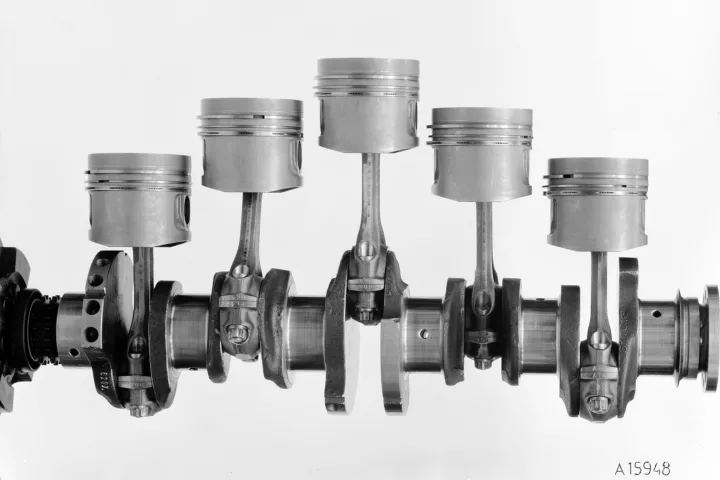Mercedes-Benz's legendary 5-cylinder diesel turned 50 years old
In 1974, Daimler-Benz first launched the new, more luxurious Mercedes-Benz 240D model, equipped with a 5-cylinder diesel engine. At first glance, this decision is surprising, but the reasons for it are seriously argued: the Mercedes-Benz 240D is a car of a higher class compared to the 200 in the 220D, and to drive it, an engine with a power of no less than 80 horsepower. On the other hand, in the Mercedes-Benz 240, elements of the 220 D model are widely used, and in particular the frame, which is why the length of the engine is limited within rather narrow limits. With these parameters, the designers have three options to achieve the required 80 horsepower, and in the first of them, the 4-cylinder engine from the Mercedes-Benz 220D can be equipped with a turbocharger. This solution is the simplest and most effective, but with the available pre-chamber mixing system, the turbocharger cannot provide good cleaning of the cylinders and the agility of the engine, especially at low revs, is very poor. The second possibility is to increase the displacement of the engine by increasing the diameter of the cylinders. It is connected with the inconvenience that the unification between the 220 D engine and the new model will be lost, which is disadvantageous both for the production and for the maintenance of the car. The third possibility is to increase the number of cylinders to 6, but then the engine becomes longer and the use of a longer frame for the car becomes necessary Alternator Valeo.

This led to the idea of creating a 5-cylinder engine that not only developed the required 80 horsepower, but was also completely unified with the 4-cylinder and short enough to fit on the frame.
In a normal 5-cylinder engine, the crankshaft must have 5 arms, making angles of 72° with each other and therefore located in 5 planes. The firing sequence is 144° apart, which achieves better stroke uniformity than the 4-cylinder engine, with ignitions taking place 180° apart. The following ignition sequence is selected: 1 – 2 – 4 – 5 – 3.
The main challenge for the constructors is related to the good balancing of the engine. From the dynamics of multi-cylinder engines, it is known that while in the ordinary 6-cylinder engine the inertial forces of the first and second order mutually balance each other, in the case of the 4-cylinder engine there is a mutual balancing of only the forces of the first order. In the 5-cylinder engine, the forces of the first and second order mutually balance each other, but the moments of the second order remain unbalanced, which is why the operation of the engine is accompanied by shocks and vibrations. This shortcoming has been remedied by placing counterweights on the two end arms and on the related arm of the crankshaft. Thanks to the correct selection of the masses and the arrangement of the counterweights, the new 5-cylinder diesel engine runs smoothly and calmly, almost as much as the 6-cylinder engines.
In terms of its other design features, the new engine is completely identical to the 4-cylinder engine of the Mercedes-Benz 220D. The diameter of the cylinders is 87 mm, and the stroke of the piston is 92.4 mm. The fuel pump is simple, with a mechanical regulator. To facilitate initial start-up, glow plugs are installed in the pre-chamber.
Maximum power is 80 horsepower at 4,000 rpm. Fuel consumption varies from 7 to 11 liters per 100 km, depending on the speed of travel, and the maximum speed of the car is 148 km per hour.
- 2025-12-17 - Long live the king? (a return to the world of F1 two decades ago)
- 2025-12-16 - Mercedes R-Class: the road Airbus
- 2025-12-15 - The new Smart is almost 5 meters long!
- 2025-12-14 - Hooray! Another 3 km of the Hemus Highway has been opened
- 2025-12-13 - Porsche has launched a special version of the 911 in honor of visionary designer Ferdinand Alexander Porsche
- 2025-12-12 - They are lifting the ban on internal combustion engines!
- 2025-12-11 - Volkswagen's unknown Mini, created half a century ago
- 2025-12-10 - SMZ-C3D: myths and facts about the legendary "Invalidka"
- 2025-12-09 - Renault 25: a sense of luxury from the 80s
- 2025-12-08 - Creative freedom in socialist Poland: the cross between Fiat 126P and Polonez












